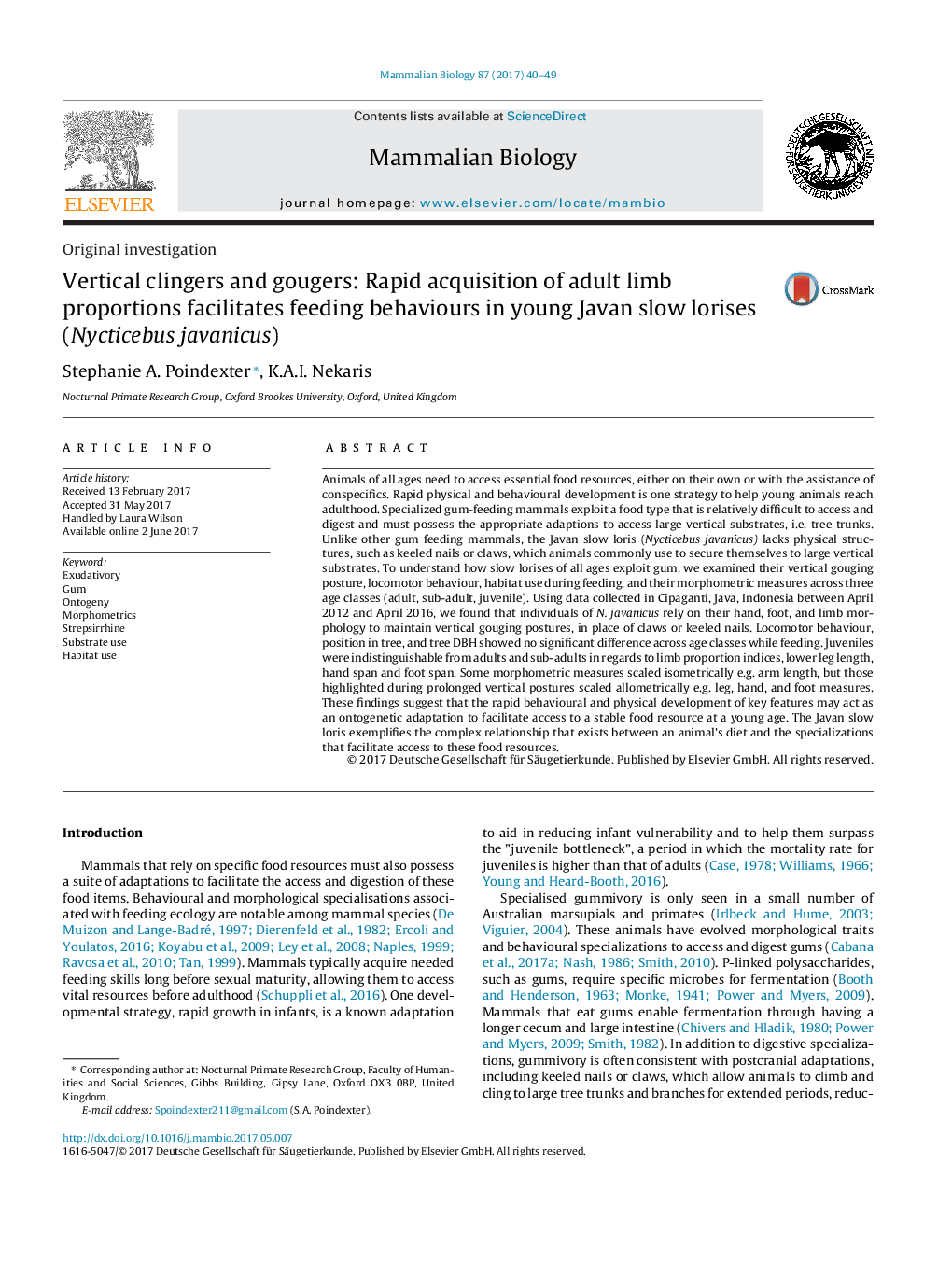| Article ID | Journal | Published Year | Pages | File Type |
|---|---|---|---|---|
| 5533706 | Mammalian Biology - Zeitschrift für Säugetierkunde | 2017 | 10 Pages |
Animals of all ages need to access essential food resources, either on their own or with the assistance of conspecifics. Rapid physical and behavioural development is one strategy to help young animals reach adulthood. Specialized gum-feeding mammals exploit a food type that is relatively difficult to access and digest and must possess the appropriate adaptions to access large vertical substrates, i.e. tree trunks. Unlike other gum feeding mammals, the Javan slow loris (Nycticebus javanicus) lacks physical structures, such as keeled nails or claws, which animals commonly use to secure themselves to large vertical substrates. To understand how slow lorises of all ages exploit gum, we examined their vertical gouging posture, locomotor behaviour, habitat use during feeding, and their morphometric measures across three age classes (adult, sub-adult, juvenile). Using data collected in Cipaganti, Java, Indonesia between April 2012 and April 2016, we found that individuals of N. javanicus rely on their hand, foot, and limb morphology to maintain vertical gouging postures, in place of claws or keeled nails. Locomotor behaviour, position in tree, and tree DBH showed no significant difference across age classes while feeding. Juveniles were indistinguishable from adults and sub-adults in regards to limb proportion indices, lower leg length, hand span and foot span. Some morphometric measures scaled isometrically e.g. arm length, but those highlighted during prolonged vertical postures scaled allometrically e.g. leg, hand, and foot measures. These findings suggest that the rapid behavioural and physical development of key features may act as an ontogenetic adaptation to facilitate access to a stable food resource at a young age. The Javan slow loris exemplifies the complex relationship that exists between an animal's diet and the specializations that facilitate access to these food resources.
